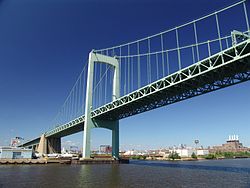



H2L2 (for three decades, officially Harbeson, Hough, Livingston & Larson) was an architecture firm in Philadelphia founded in 1907 by Paul Philippe Cret as The Offices of Paul Philippe Cret. [1] In 1923, John Harbeson became Cret's partner, along with William J. H. Hough and William Livingston. In 1925 the firm was joined by Roy Larson. After Cret's death in 1945, the younger partners followed Cret's wishes and removed Cret's name from their masthead, continuing as Harbeson, Hough, Livingston & Larson. In 1976, the firm officially became H2L2 after years of using the name informally. [2] In 2012, H2L2 and NELSON, which was founded in 1977 as an interior design firm, merged to create a full-service architecture/engineering firm. [3]
Contents
- Major works
- The Offices of Paul Philippe Cret
- Harbeson, Hough, Livingston & Larson
- References
- External links
Much of the firm's work is visible in Philadelphia and around the country. [4]